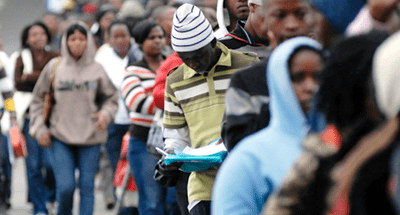According to the Ghana Statistical Service (GSS), the 2023 Annual Household Income and Expenditure Survey (AHIES) revealed that in the third quarter of 2023, approximately 1.9 million youth aged 15 to 35 years in Ghana were not in education, employment, or training (NEET).
The GSS report showed that females made up the majority of youth NEET, with 1.2 million females not in education, employment, or training, compared to 715,691 males.
“One in every three youth NEET resided in the Greater Accra Region, with over half a million (565,360) youth not engaging in any of the three activities. Four other regions, besides Greater Accra, also recorded youth NEET over 100,000: the Ashanti (352,503), Central (155,171), Eastern (143,601), and Western (137,865) regions”.
Ghana Statistical Service (GSS)
According to the GSS, the youth NEET rate was significantly higher for females, at 21.0%, compared to 15.0% for males, representing a six-percentage-point gender gap.
The GSS also reported that the Greater Accra region had the highest proportion of youth NEET, with approximately 26.9% of the population aged 15-35 years neither in education, employment, or training, representing more than a quarter of the region’s youth population.
The North East Region recorded the second-highest youth NEET rate, at 19.5%, indicating that roughly 20% of young people in the region were not engaged in education, employment, or training, according to the GSS.
According to the GSS, all regions except Bono East, which had a relatively low rate of 8.3%, recorded double-digit youth NEET rates, highlighting a widespread issue of disengagement among young people across the country.
The GSS further stated that the youth NEET rate was significantly higher in urban areas, at 20.6%, compared to rural areas, where it stood at 15.0%, indicating a notable urban-rural disparity in the proportion of young people not engaged in education, employment, or training.
The GSS indicated that the NEET rate experienced a significant decline of 5.9 percentage points, dropping from 24.1% in Q3 2022 to 18.2% in Q3 2023, representing a notable improvement in the number of young people engaged in education, employment, or training over the one-year period.
Nearly 500,000 Youth Move Out Of NEET
Furthermore, the Ghana Statistical Service reported a significant reduction of 462,998 in the total number of youth NEET, representing a decrease of nearly half a million young people who were not engaged in education, employment, or training over the one-year period.

According to the GSS, the proportion of youth NEET decreased in all regions between Q3 2022 and Q3 2023, with the exception of Greater Accra, which saw a slight increase of 0.5 percentage points, a marginal deviation from the overall trend of improvement across the country.
“Greater Accra was the only region to record increases in youth NEET for both males and females between Q3 2022 and Q3 2023. In the other 15 regions, youth NEET declined for both males and females except for Western which recorded a divergent trend by sex: a 5.9 percentage point decrease for males and a 0.3 percentage point increase for females”.
Ghana Statistical Service (GSS)
The GSS pointed out that July 15th marks the annual World Youth Skills Day, an occasion that emphasizes the crucial need to equip young people with the essential skills necessary for gaining employment, securing decent work, and pursuing entrepreneurial ventures.
According to the GSS, the theme for World Youth Skills Day 2024 is “Youth Skills for Peace and Development”, highlighting the critical role that skilled young people play in driving progress and promoting peace and prosperity in communities around the world.
As such, the GSS survey highlights the urgent need for the government to prioritize youth employment initiatives, creating opportunities that foster sustainable development, economic growth, and social stability, thereby unlocking the full potential of Ghana’s young population.
READ ALSO: Somalia Car Bomb Attack Leaves Nine Dead, Al-Shabab Claims Responsibility



















